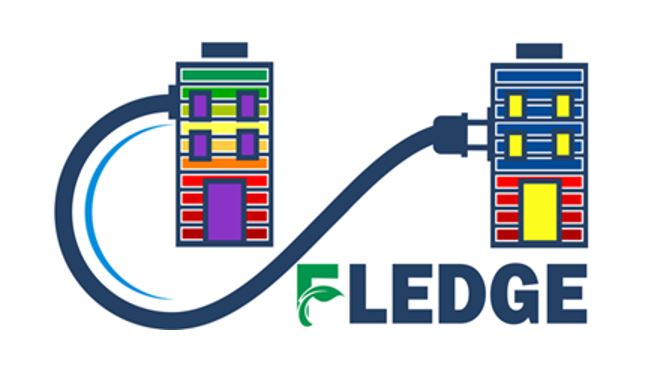A novel hierarchical edge-based flexibility management ecosystem at both building and city level
FLEdge aims to develop a hierarchical flexibility energy management system based on a distributed and decentralized architecture with a novel core element – the Edge-Energy Management (EEM) device. In EEM, energy flexibility will be managed in an automatic, optimal and decentralized manner with the ultimate goal to transform buildings, neighbourhoods, districts and cities to Positive Energy Districts (PED).
The energy landscape is radically transforming, driven from necessity for carbon emissions reduction, cutting-edge Smart Grid technologies’ evolution and novel demand-oriented electricity market design approaches towards PED. On the one side, ambitious energy targets from the EU aim to deliver a reduction of greenhouse gas emissions by 40% and 27% RES sharing by 2030, while on the other side the Russia-Ukraine war brought a crisis to the energy domain. Peak load variability due to changes in weather conditions, uncontrolled penetration or RES and Russia-Ukraine war stand as the main barriers for accelerating a more sustainable future. Inherently, demand could respond to changes in generation even more rapidly than a traditional generator can increase its supply.
Thus, the solution lies into thinking from a demand-centric perspective; instead of the classical dispatchable generation-meets-inelastic demand approach, by utilizing modern ICT technologies, demand resolves into a flexible component in the electricity market. This flexibility is central for the power grid’s efficient operation as it allows for balancing demand and supply of electricity. Exploiting the demand flexibility in small and medium scale consumers, instead of investing in new non-renewable transmission-connected generation capacity introduces a more pro-active and effective approach for the future Smart Grid energy transactions.
Objective
- Develop a hierarchical flexibility energy management system based on a distributed and decentralized architecture with a novel core element – EEM device.
- Transform buildings, neighbourhoods, districts and cities to PED.
- Edge-based energy sources (RES, storage, load) optimization.
- Optimize the management of the building in an automatic manner.
- Increased occupants’ well-being and comfort following a human-centric approach at all FLEdge operations.
- Demand/Response commands from the EEM device at upper level until city level.
- Improvement of neighbourhood, district, city performance towards smart and green cities through EEM devices and EMaN nodes.
Duration and partners
Duration: January 1, 2024 – December 31, 2026 (36 months)
Partners:
The project is led by International Hellenic University (IHU), Greece.
Other partners are:
- Sofia University, GATE Institute (GATE), Bulgaria
- KINNON LEGAL SERVICES S.R.L. (KINNON), Romania
- CHALMERS TEKNISKA HOGSKOLA AB (CHALMERS), Sweden
Partners with own budget are:
- STOLICHNA OBSHTINA (SOFIA), Bulgaria
- ELERING AS (ELERING), Estonia
- SÄTT FÄRG PÅ GÖTEBORG EKONOMISK FÖRENING (SFPG), Sweden
- ENERGOMONITOR BULGARIA LTD (Energomonitor), Bulgaria
- THERMO-LOGIC AB (Thermologic), Sweden
Funding
Funding source: DUT Call 2022 is funded by the European Commission under the Horizon Europe Partnership scheme. The call is also part of the MICall 2022 to contribute the Urban Transition Mission of Mission Innovation.
Budget: total budget is 927 780 EUR (budget for the FinEst Centre is 150 000 EUR).
The Role of the FinEst Centre for Smart Cities
FinEst Centre is a partner in the project and responsible for leading the work package “Energy Management Tools & Services.” Our responsibilities include tasks related to Energy Load & Generation Forecasting, Load Disaggregation, Building Behaviour Inference Engine, Building Energy Flexibility and Energy Sources Optimization.
Additionally, we will conduct Pilot Surveys and Use Case Scenarios, with Dr. Noman Shabbir being the Technical & Innovation Manager and Dr. Kaija Veskioja the key contact of the project from the FinEst Centre.


